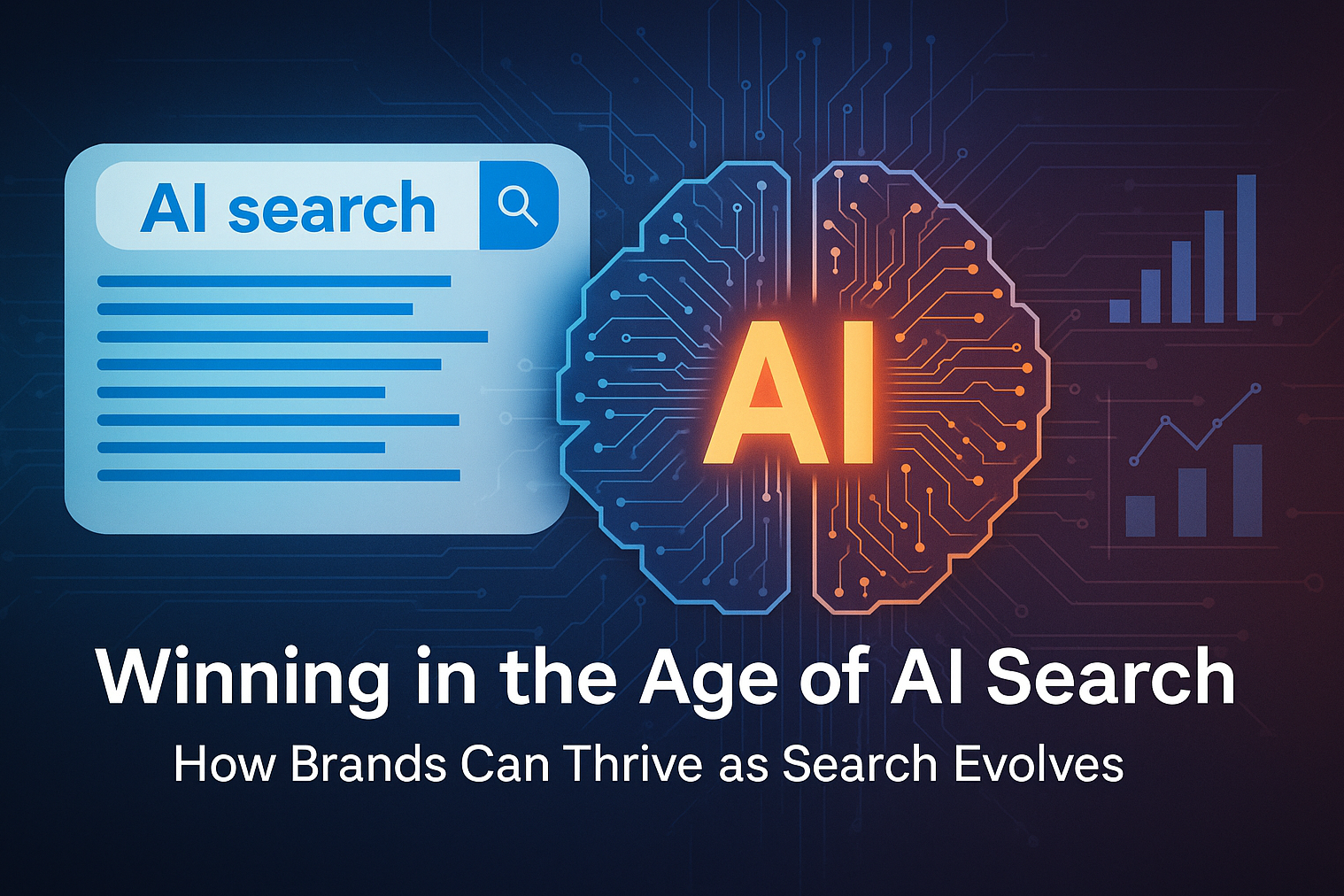Winning in the Age of AI Search: How Brands Can Thrive as Search Evolves
Search is changing faster than ever. With the rise of AI-powered features like Google’s AI Overviews and AI Mode, the familiar “10 blue links” are...
Read moreHow can we apply concepts of rhetoric in content marketing? Our Digital Content Executive, Sian Moss, talks us through the three modes of persuasion that form the Rhetorical Triangle, and how they might appeal to your target audience.
Whether you’re selling a product or service, using convincing, influential language in your digital content is a must. But what’s the most effective way to be persuasive in your writing? And how do we apply the concepts of rhetoric in content marketing?
“[Rhetoric is] the art of using language effectively so as to persuade or influence others, especially the exploitation of figures of speech and other compositional techniques to this end.”
- Oxford English Dictionary
Rhetoric is embedded in everyday communication – when we speak, listen, read or write, it’s there. In all kinds of social situations, we use our words to persuade and influence others. So whether you’re convincing your partner to buy one loaf of bread over another, you’re asking for a pay rise or you’re getting yourself out of a sticky situation, you’re using some form of rhetoric. But where did it come from?
Aristotle is generally credited for forming the basics of rhetoric, influencing the development of its theory from ancient times through to the modern theory. This is when he coined the “three artistic proofs”, or modes of persuasion – each one designed to appeal to different thoughts and achieve different persuasive results. These are ethos, pathos and logos, together forming the Rhetorical Triangle. Often used in marketing to appeal to an audience and convince them to buy into a product or service, these three proofs each target a specific area of persuasion.
But how do they work? And more importantly, how are they used in content marketing?
This persuasive appeal refers to how trustworthy or credible a writer is, and how knowledgeable they are about a subject. When you’re marketing your expertise in a field, you’re employing ethos and showing that you can provide a high-quality service or product, and offer a unique set of skills. If your brand has built up a reputation that your audience is familiar with, they are more likely to invest in your product or service – so use this to your advantage. But ethos is more than status or credentials, it is developed within the discourse. You can establish ethos by using tone and style to connect your argument to your audience’s own set of views. Talk about your experience as a business and when the company was founded, or directly appeal to ethos by showcasing well-known customers, success stories and titles – to prove that you are an established brand with experience in working with a range of successful businesses.
If your audience doesn’t trust you, then the following appeals may be worthless. A consumer’s choices are strongly affected by whether they have confidence in a person, brand, product or service. So to keep your credibility intact, back up any claim you make with quotes from experts, sources, testimonials and case studies. That way, the readers don’t just have to take your word for it. Influencer marketing is also a good way to utilise the ethos appeal, as working with influencers with high stature validates the product and provides credibility.
This appeal draws on the reader’s emotions, interests, imagination and sympathies. In order to persuade the audience using pathos, they must be encouraged to identify with the writer. So use compelling anecdotes, play with emotive language and trigger an imaginative response from the reader by offering a convincing argument that they can relate to. Without pathos, your content is just a series of stats, facts and logic – losing any sense of connection with your audience.
Generate a sense of amiability by communicating with consumers in a pleasant and clear manner, using warm language and branding. Create valuable, useful and free content that is valuable to both you and any prospective customer, avoiding the use of complicated jargon and sentences. Use emotionally charged lexicon that provides more impact and choose images that appeal to the audience’s imagination and sympathies – so that when they load your site, they’re immediately drawn to what you’re offering. Using these techniques will evoke a series of positive emotions towards your brand or product and therefore influence your audience.
Logos refers to the clarity of the message you are portraying and how effective your supporting evidence is. This one’s important, because if you can provide a persuasive argument that demonstrates your knowledge and experience, you can also demonstrate credibility (ethos) and reassurance (pathos).
When trying to appeal to a reader’s logic, you must make sure that they are able to follow clear arguments that are backed up with reasonable and reliable details. This logic is particularly useful when producing B2B content, as potential customers often have the responsibility to make decisions with someone else’s money, and tend to require justification to spend that money. So the more useful and factually correct your content is, the more powerful and persuasive it is for the consumer.
The key to producing effective persuasive content is to use the best combination of all three rhetorical appeals. This approach is best used in long-form content, to allow the perfect balance of credibility, emotion and logic to create a powerful content strategy that drives results. But the Rhetorical Triangle isn’t just about digital content. Pulling together a pitch? Try using Aristotle’s three persuasive appeals to help drive you towards success.
Are you looking to improve your digital content strategy? Find out how our experts can help by getting in touch today.
More articles you might be interested in:

Search is changing faster than ever. With the rise of AI-powered features like Google’s AI Overviews and AI Mode, the familiar “10 blue links” are...
Read more


The latest version of our newsletter should have settled in your email inbox, detailing the need-to-know information and must-read thought leadership...
Read more
Arming yourself with the right tools to ensure a smooth site migration is important - find out how to protect your SEO during a migration today.
Read more
As the cost of living continues to present challenges for many Brits, an increasing number of families are choosing to holiday within the United...
Read more
Our first curated newsletter has hit inboxes, detailing all of the latest need-to-know information and sharing all the necessary thought leadership...
Read more
Over the past few years, marketing leaders have been gearing up for the inevitable 'Cookieless Future'. Safari was the first to bid farewell to...
Read more